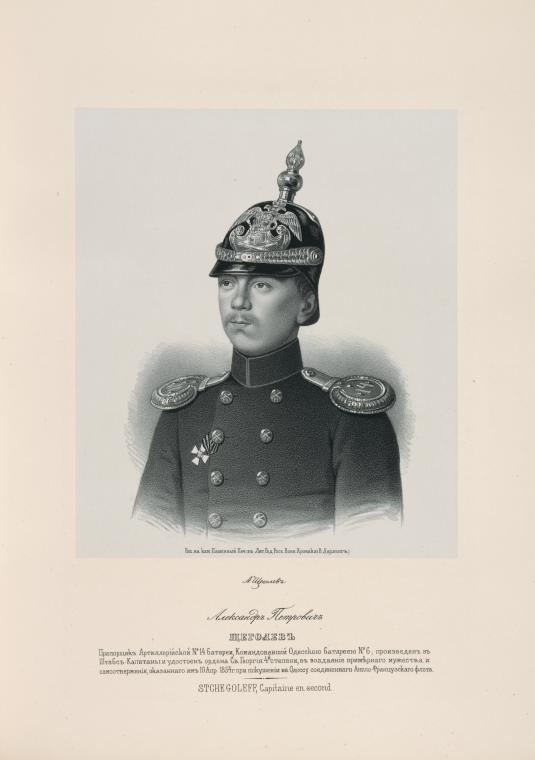 | ||
Praporshchik (Russian: пра́порщик, [ˈprapərɕɪk]) is a rank in the Russian military and is used in other uniformed services of the Russian government such as the Police. It was a junior officer rank (comparable to NATO OF-1) in Imperial Russia and was restored in the 1970s as a separate career group between non-commissioned officers and officers (comparable to OR-9).
Contents
Imperial Russia
Praporshchik was originally an Ober-ofizer rank, in line to the Table of Ranks class XII/XIII in the military of the Russian Empire equivalent to a junior officer rank (OF-1). The rank was abolished in 1917 by the Bolsheviks (but still existed in 1917—1921 in the White Army) and restored in the 1970s in the former USSR for non-commissioned officers and became equivalent to the non-commissioned officer rank OR-9.
It was first introduced in Streltsy New Regiments. The name originates from Slavonic prapor (прапор), meaning flag; the praporshchik was a flag-bearer in Kievan Rus troops. In the New Regiments of the Streltsy and the "new army" of Peter the Great, praporshchik was ranked as a commissioned officer of the lowest grade; this was legalised by the Table of Ranks of 1722. By the 19th century, the rank was given to senior non-commissioned officers of the Russian army upon their retirement and also reserve or volunteer officers with no previous service. From then on commissioned officers started service as Podporuchik.
In spite of this, podpraporshchik ("sub-ensign") was one of the NCO grades, originally below sergeant and feldwebel. From 1826 to 1884 it became the highest non-commissioned rank of the infantry, cavalry and the Leib Guard. From 1884 podpraporshchik ranked below the newly introduced NCO grade zauryad praporshchik ("deputy ensign").
Soviet Army and Militia
In the Soviet Army, the reintroduction of the praporshchik rank in 1972, along with the michman rank in the Soviet Navy, marked the attempt to recreate a corps of contract non-commissioned officers similar to master sergeants and chief petty officers, the role that was previously reserved for senior drafted personnel. Contrary to Western practice of assigning the senior sergeant ranks to veteran soldiers, the Soviet ranks of starshina and sergeant were routinely assigned to 20 year old soldiers at the end of their 2-year draft. The praporshchiks were aged volunteers and were expected to have more authority over draftsmen than similarly aged sergeants; they are placed in a separate category of "master non-commissioned officers" (praporshchik and michman).
See further commentary on the rank at Carey Schofield, Inside the Soviet Army, Headline Book Publishing, 1991, where long-service praporshchiks' scrounging and repair skills were celebrated.
Carey Schofield's Inside the Soviet Army c.1990 provides a good description of the place of the praporshchik within the Soviet military system.
Praporshchik rank of the Russian Federation
The praporshchik rank continues to be used in the armies of ex-Soviet states.
By assumption, since December 2010, in January–March for military service is no longer accepted in person or rank of lieutenant senior warrant officer, and those who have not yet their contract expired or age limit reached, continue to serve, preserving rank and insignia. Abolition did not affect Interior Ministry troops, border guards, FSB, FSO, troops MES and other military formations, different from the Russian Defense Ministry, in addition, there is a special civil departments rank Ensign.
February 27, 2013 on the expanded board of the Ministry of Defence of the Russian Federation, Russian Defense Minister S. Shoigu was announced the return of the Institute of warrant officers in the Armed Forces of Russia.
Ministry of Defense on July 1, introduced a new staffing for the first time in five years there were special positions for warrant officers. According to the head of the Main Personnel (GAM) Ministry of Defence Colonel-General Viktor Goremykina for warrant officers allocated about 100 positions, of which only military - "no warehouses, no bases" were the main requirement Defense Minister Sergei Shoigu . This position generally divided into commander (platoon commander Service, commander of combat group fighting vehicle, battle stations) and technical (tech company, the chief of a radio, an electrician, a paramedic, the head of the repair shop, head of the technical unit, etc.). On December 1, 2008, these positions were considered sergeant. State Secretary of the Ministry of Defense Nikolai Pankov, said that the positions warrant require special education, but "not up" to the officers.
Rank designation in other countries
In the countries below spelling and position in the rank order are equivalent or almost similar.
Some member countries of the former Warsaw Pact followed the equivalent concept, used however different rank designations.
In the former People's Republic of Bulgaria this rank group did never exist.
